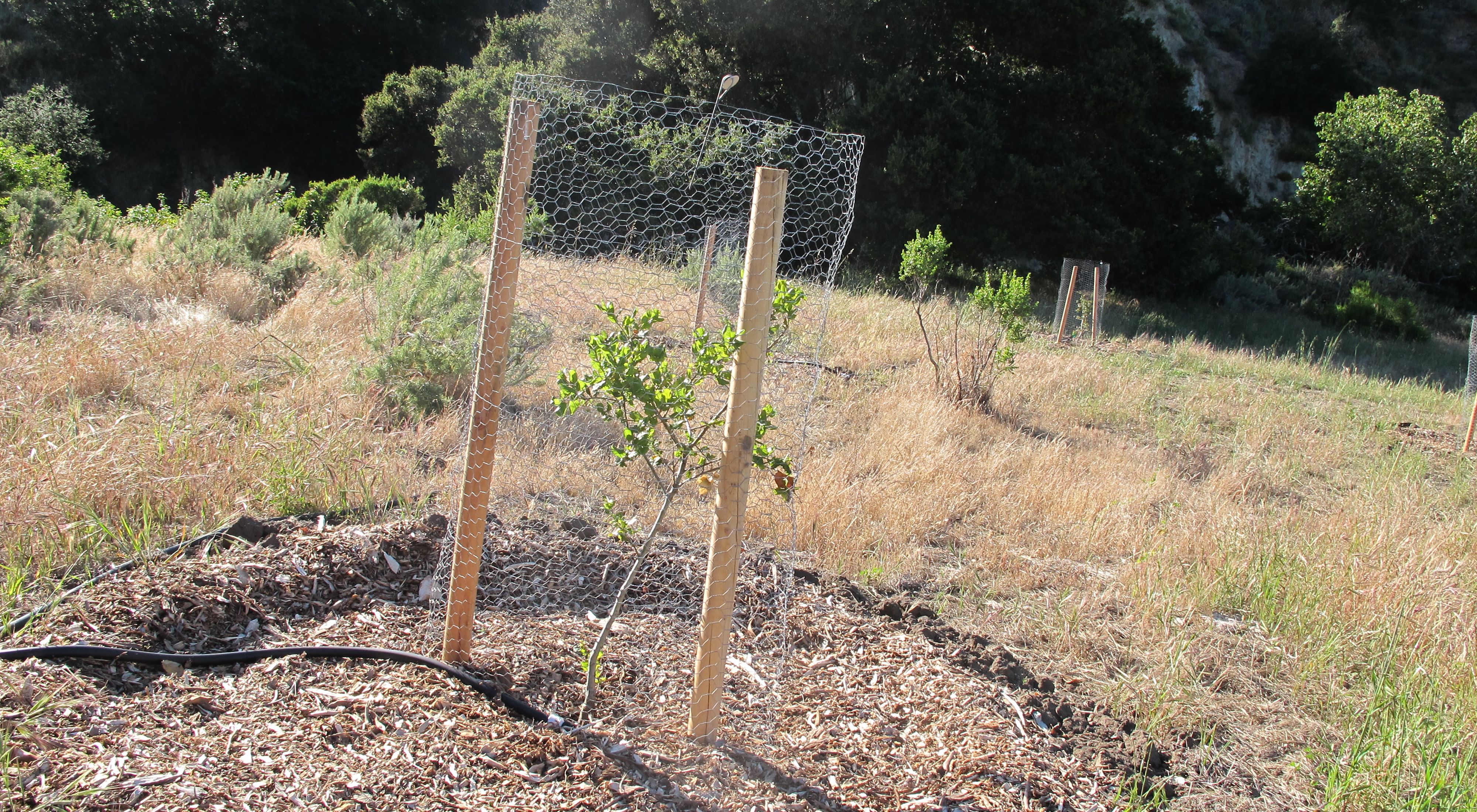Restoration is one of the key elements of the Dangermond Preserve’s vision of Preserve, Restore, Learn and Innovate.
Restoration projects range in size and habitat from converting 150 acres of former agricultural lands back to oak woodlands to removing 1,000 acres iceplant to re-establish coastal prairie, dune headland, and wetland habitats.
Restoration at the Preserve also aims to bring back culturally and ecologically important fish and wildlife, such as the critically endangered steelhead trout. TNC is removing barriers to fish migration and restoring creek habitat to support this iconic species and others such as western pond turtles and the California red-legged frog. Click on the points on the map below to learn about our restoration projects.
Restoration Projects at the Dangermond Preserve
Read more about some of the ongoing restoration projects at the Dangermond Preserve.
Oak Restoration
On the Preserve, oak seedlings and saplings are growing in former agricultural fields. This iconic California species is a keystone of the oak woodland ecosystem supporting a wide range of wildlife. TNC is leading a Science Working Group to look at factors that support natural regeneration of oak woodlands and this paper is a step in understanding those dynamics. Check out the oaks on this live dashboard.

Iceplant
Iceplant is a non-native coastal succulent that outcompetes native plants and shrubs. On the Preserve, we estimate that we have over 1,000 acres of iceplant on the coastal terrace filling wetlands, replacing native coastal prairie, and inhibiting sand movement across the headland dunes. TNC is working with a Science Working Group to find cost-effective ways to remove iceplant at a landscape scale.

Fish Passage Barriers
The Preserve is uniquely positioned to support the recovery effort of critically endangered Southern California steelhead; more than 95% of the Jalama Creek watershed lies within the Preserve’s boundaries. TNC is currently working with partners to remove two barriers to migration to spawning grounds in Jalama Creek and its tributaries, providing access to 12 miles of fish habitat.

Jalachichi Stock Ponds
The Preserve includes a few places where old ranch infrastructure needs to be reverse-engineered to recreate a functioning ecosystem. A complex of three stock ponds, the largest of the Jalachichi ponds with its concrete spillway was removed, and replaced with a seasonal creek and riparian zone. The restored riparian zone will provide habitat for species like the endangered least Bell’s vireo.

Bluff Road Revegetation
Vehicle traffic on the coastal bluffs can have devastating impacts on the native vegetation that supports birds and wildlife. Removing vehicle access, seeding with a native seed palette, and removing invasive weeds are bringing this site back to its former glory. Springtime brings a suite of wildflowers while shrubs provide shade and protection from the wind in the summer months.


